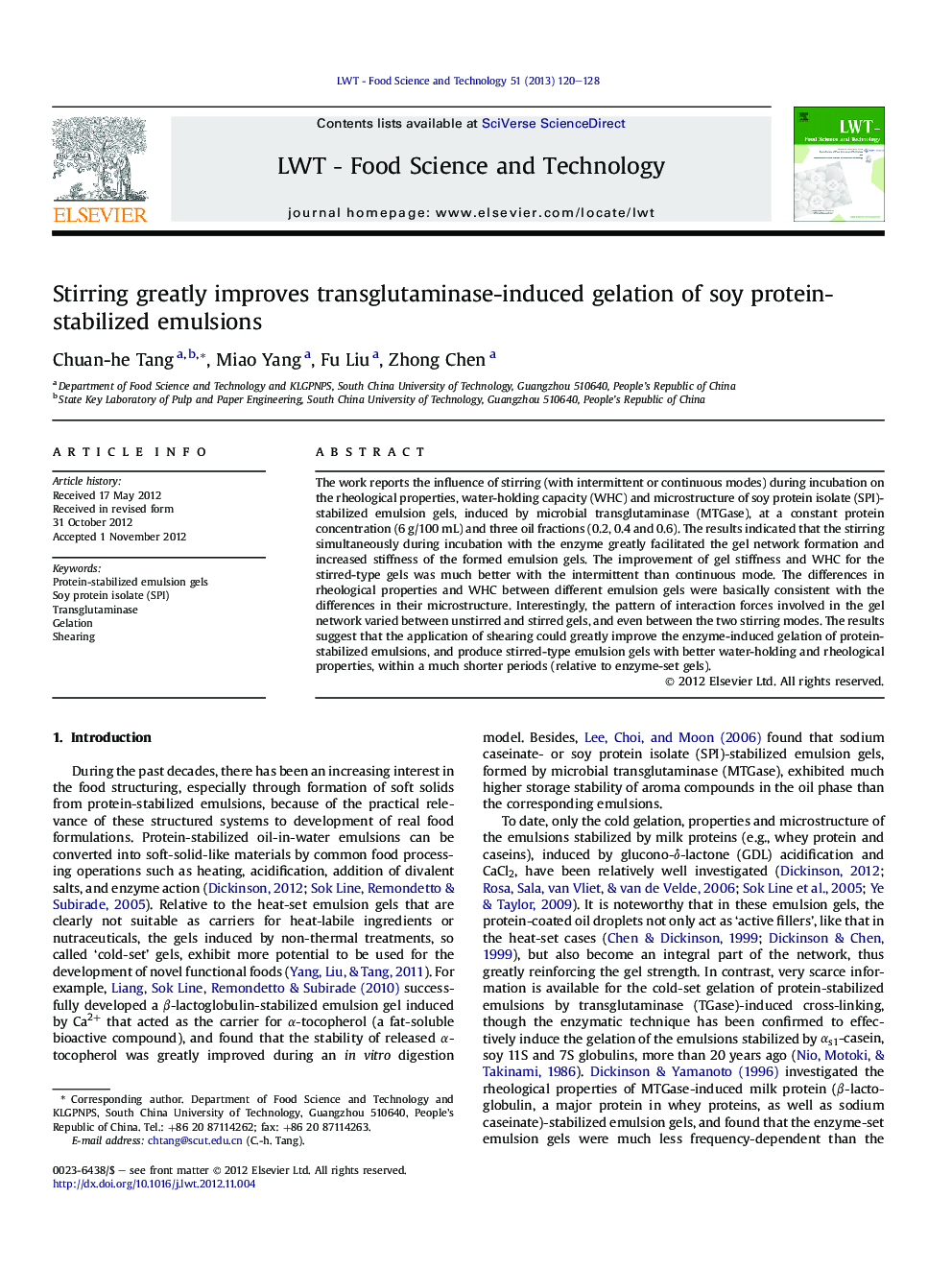| کد مقاله | کد نشریه | سال انتشار | مقاله انگلیسی | نسخه تمام متن |
|---|---|---|---|---|
| 6404703 | 1330907 | 2013 | 9 صفحه PDF | دانلود رایگان |
The work reports the influence of stirring (with intermittent or continuous modes) during incubation on the rheological properties, water-holding capacity (WHC) and microstructure of soy protein isolate (SPI)-stabilized emulsion gels, induced by microbial transglutaminase (MTGase), at a constant protein concentration (6Â g/100Â mL) and three oil fractions (0.2, 0.4 and 0.6). The results indicated that the stirring simultaneously during incubation with the enzyme greatly facilitated the gel network formation and increased stiffness of the formed emulsion gels. The improvement of gel stiffness and WHC for the stirred-type gels was much better with the intermittent than continuous mode. The differences in rheological properties and WHC between different emulsion gels were basically consistent with the differences in their microstructure. Interestingly, the pattern of interaction forces involved in the gel network varied between unstirred and stirred gels, and even between the two stirring modes. The results suggest that the application of shearing could greatly improve the enzyme-induced gelation of protein-stabilized emulsions, and produce stirred-type emulsion gels with better water-holding and rheological properties, within a much shorter periods (relative to enzyme-set gels).
⺠Stirring greatly facilitated the MTGase-gelation of soy protein emulsions. ⺠Stirring efficiently increased the gel stiffness. ⺠The intermittent stirring was more favorable than the continuous one. ⺠The interactive force pattern in the emulsion gels varied with the stirring mode.
Journal: LWT - Food Science and Technology - Volume 51, Issue 1, April 2013, Pages 120-128
